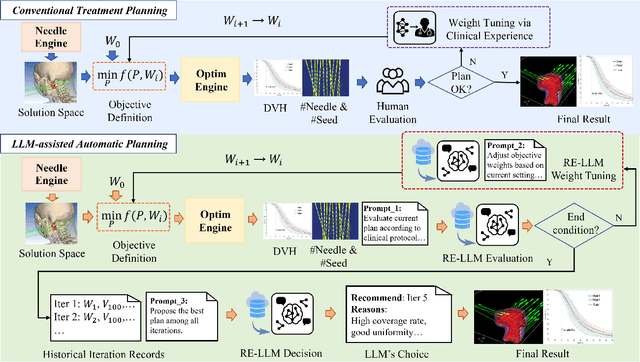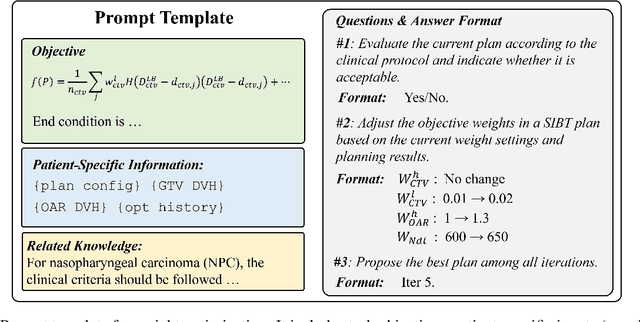Junjie Wang
Department of Radiation Oncology, Peking University Third Hospital, Beijing, China
All Changes May Have Invariant Principles: Improving Ever-Shifting Harmful Meme Detection via Design Concept Reproduction
Jan 08, 2026Abstract:Harmful memes are ever-shifting in the Internet communities, which are difficult to analyze due to their type-shifting and temporal-evolving nature. Although these memes are shifting, we find that different memes may share invariant principles, i.e., the underlying design concept of malicious users, which can help us analyze why these memes are harmful. In this paper, we propose RepMD, an ever-shifting harmful meme detection method based on the design concept reproduction. We first refer to the attack tree to define the Design Concept Graph (DCG), which describes steps that people may take to design a harmful meme. Then, we derive the DCG from historical memes with design step reproduction and graph pruning. Finally, we use DCG to guide the Multimodal Large Language Model (MLLM) to detect harmful memes. The evaluation results show that RepMD achieves the highest accuracy with 81.1% and has slight accuracy decreases when generalized to type-shifting and temporal-evolving memes. Human evaluation shows that RepMD can improve the efficiency of human discovery on harmful memes, with 15$\sim$30 seconds per meme.
Know Thy Enemy: Securing LLMs Against Prompt Injection via Diverse Data Synthesis and Instruction-Level Chain-of-Thought Learning
Jan 08, 2026Abstract:Large language model (LLM)-integrated applications have become increasingly prevalent, yet face critical security vulnerabilities from prompt injection (PI) attacks. Defending against PI attacks faces two major issues: malicious instructions can be injected through diverse vectors, and injected instructions often lack clear semantic boundaries from the surrounding context, making them difficult to identify. To address these issues, we propose InstruCoT, a model enhancement method for PI defense that synthesizes diverse training data and employs instruction-level chain-of-thought fine-tuning, enabling LLMs to effectively identify and reject malicious instructions regardless of their source or position in the context. We evaluate InstruCoT across three critical dimensions: Behavior Deviation, Privacy Leakage, and Harmful Output. Experimental results across four LLMs demonstrate that InstruCoT significantly outperforms baselines in all dimensions while maintaining utility performance without degradation
RxnBench: A Multimodal Benchmark for Evaluating Large Language Models on Chemical Reaction Understanding from Scientific Literature
Dec 30, 2025Abstract:The integration of Multimodal Large Language Models (MLLMs) into chemistry promises to revolutionize scientific discovery, yet their ability to comprehend the dense, graphical language of reactions within authentic literature remains underexplored. Here, we introduce RxnBench, a multi-tiered benchmark designed to rigorously evaluate MLLMs on chemical reaction understanding from scientific PDFs. RxnBench comprises two tasks: Single-Figure QA (SF-QA), which tests fine-grained visual perception and mechanistic reasoning using 1,525 questions derived from 305 curated reaction schemes, and Full-Document QA (FD-QA), which challenges models to synthesize information from 108 articles, requiring cross-modal integration of text, schemes, and tables. Our evaluation of MLLMs reveals a critical capability gap: while models excel at extracting explicit text, they struggle with deep chemical logic and precise structural recognition. Notably, models with inference-time reasoning significantly outperform standard architectures, yet none achieve 50\% accuracy on FD-QA. These findings underscore the urgent need for domain-specific visual encoders and stronger reasoning engines to advance autonomous AI chemists.
PentestEval: Benchmarking LLM-based Penetration Testing with Modular and Stage-Level Design
Dec 16, 2025Abstract:Penetration testing is essential for assessing and strengthening system security against real-world threats, yet traditional workflows remain highly manual, expertise-intensive, and difficult to scale. Although recent advances in Large Language Models (LLMs) offer promising opportunities for automation, existing applications rely on simplistic prompting without task decomposition or domain adaptation, resulting in unreliable black-box behavior and limited insight into model capabilities across penetration testing stages. To address this gap, we introduce PentestEval, the first comprehensive benchmark for evaluating LLMs across six decomposed penetration testing stages: Information Collection, Weakness Gathering and Filtering, Attack Decision-Making, Exploit Generation and Revision. PentestEval integrates expert-annotated ground truth with a fully automated evaluation pipeline across 346 tasks covering all stages in 12 realistic vulnerable scenarios. Our stage-level evaluation of 9 widely used LLMs reveals generally weak performance and distinct limitations across the stages of penetration-testing workflow. End-to-end pipelines reach only 31% success rate, and existing LLM-powered systems such as PentestGPT, PentestAgent, and VulnBot exhibit similar limitations, with autonomous agents failing almost entirely. These findings highlight that autonomous penetration testing demands stronger structured reasoning, where modularization enhances each individual stage and improves overall performance. PentestEval provides the foundational benchmark needed for future research on fine-grained, stage-level evaluation, paving the way toward more reliable LLM-based automation.
SpecQuant: Spectral Decomposition and Adaptive Truncation for Ultra-Low-Bit LLMs Quantization
Nov 11, 2025



Abstract:The emergence of accurate open large language models (LLMs) has sparked a push for advanced quantization techniques to enable efficient deployment on end-user devices. In this paper, we revisit the challenge of extreme LLM compression -- targeting ultra-low-bit quantization for both activations and weights -- from a Fourier frequency domain perspective. We propose SpecQuant, a two-stage framework that tackles activation outliers and cross-channel variance. In the first stage, activation outliers are smoothed and transferred into the weight matrix to simplify downstream quantization. In the second stage, we apply channel-wise low-frequency Fourier truncation to suppress high-frequency components while preserving essential signal energy, improving quantization robustness. Our method builds on the principle that most of the weight energy is concentrated in low-frequency components, which can be retained with minimal impact on model accuracy. To enable runtime adaptability, we introduce a lightweight truncation module during inference that adjusts truncation thresholds based on channel characteristics. On LLaMA-3 8B, SpecQuant achieves 4-bit quantization for both weights and activations, narrowing the zero-shot accuracy gap to only 1.5% compared to full precision, while delivering 2 times faster inference and 3times lower memory usage.
GroupRank: A Groupwise Reranking Paradigm Driven by Reinforcement Learning
Nov 10, 2025Abstract:Large Language Models have shown strong potential as rerankers to enhance the overall performance of RAG systems. However, existing reranking paradigms are constrained by a core theoretical and practical dilemma: Pointwise methods, while simple and highly flexible, evaluate documents independently, making them prone to the Ranking Myopia Trap, overlooking the relative importance between documents. In contrast, Listwise methods can perceive the global ranking context, but suffer from inherent List Rigidity, leading to severe scalability and flexibility issues when handling large candidate sets. To address these challenges, we propose Groupwise, a novel reranking paradigm. In this approach, the query and a group of candidate documents are jointly fed into the model, which performs within-group comparisons to assign individual relevance scores to each document. This design retains the flexibility of Pointwise methods while enabling the comparative capability of Listwise methods. We further adopt GRPO for model training, equipped with a heterogeneous reward function that integrates ranking metrics with a distributional reward aimed at aligning score distributions across groups. To overcome the bottleneck caused by the scarcity of high quality labeled data, we further propose an innovative pipeline for synthesizing high quality retrieval and ranking data. The resulting data can be leveraged not only for training the reranker but also for training the retriever. Extensive experiments validate the effectiveness of our approach. On two reasoning intensive retrieval benchmarks, BRIGHT and R2MED.
Evontree: Ontology Rule-Guided Self-Evolution of Large Language Models
Oct 30, 2025



Abstract:Large language models (LLMs) have demonstrated exceptional capabilities across multiple domains by leveraging massive pre-training and curated fine-tuning data. However, in data-sensitive fields such as healthcare, the lack of high-quality, domain-specific training corpus hinders LLMs' adaptation for specialized applications. Meanwhile, domain experts have distilled domain wisdom into ontology rules, which formalize relationships among concepts and ensure the integrity of knowledge management repositories. Viewing LLMs as implicit repositories of human knowledge, we propose Evontree, a novel framework that leverages a small set of high-quality ontology rules to systematically extract, validate, and enhance domain knowledge within LLMs, without requiring extensive external datasets. Specifically, Evontree extracts domain ontology from raw models, detects inconsistencies using two core ontology rules, and reinforces the refined knowledge via self-distilled fine-tuning. Extensive experiments on medical QA benchmarks with Llama3-8B-Instruct and Med42-v2 demonstrate consistent outperformance over both unmodified models and leading supervised baselines, achieving up to a 3.7% improvement in accuracy. These results confirm the effectiveness, efficiency, and robustness of our approach for low-resource domain adaptation of LLMs.
Enhancing WiFi CSI Fingerprinting: A Deep Auxiliary Learning Approach
Oct 26, 2025Abstract:Radio frequency (RF) fingerprinting techniques provide a promising supplement to cryptography-based approaches but rely on dedicated equipment to capture in-phase and quadrature (IQ) samples, hindering their wide adoption. Recent advances advocate easily obtainable channel state information (CSI) by commercial WiFi devices for lightweight RF fingerprinting, while falling short in addressing the challenges of coarse granularity of CSI measurements in an open-world setting. In this paper, we propose CSI2Q, a novel CSI fingerprinting system that achieves comparable performance to IQ-based approaches. Instead of extracting fingerprints directly from raw CSI measurements, CSI2Q first transforms frequency-domain CSI measurements into time-domain signals that share the same feature space with IQ samples. Then, we employ a deep auxiliary learning strategy to transfer useful knowledge from an IQ fingerprinting model to the CSI counterpart. Finally, the trained CSI model is combined with an OpenMax function to estimate the likelihood of unknown ones. We evaluate CSI2Q on one synthetic CSI dataset involving 85 devices and two real CSI datasets, including 10 and 25 WiFi routers, respectively. Our system achieves accuracy increases of at least 16% on the synthetic CSI dataset, 20% on the in-lab CSI dataset, and 17% on the in-the-wild CSI dataset.
Hybrid Architectures for Language Models: Systematic Analysis and Design Insights
Oct 06, 2025Abstract:Recent progress in large language models demonstrates that hybrid architectures--combining self-attention mechanisms with structured state space models like Mamba--can achieve a compelling balance between modeling quality and computational efficiency, particularly for long-context tasks. While these hybrid models show promising performance, systematic comparisons of hybridization strategies and analyses on the key factors behind their effectiveness have not been clearly shared to the community. In this work, we present a holistic evaluation of hybrid architectures based on inter-layer (sequential) or intra-layer (parallel) fusion. We evaluate these designs from a variety of perspectives: language modeling performance, long-context capabilities, scaling analysis, and training and inference efficiency. By investigating the core characteristics of their computational primitive, we identify the most critical elements for each hybridization strategy and further propose optimal design recipes for both hybrid models. Our comprehensive analysis provides practical guidance and valuable insights for developing hybrid language models, facilitating the optimization of architectural configurations.
An Iterative LLM Framework for SIBT utilizing RAG-based Adaptive Weight Optimization
Sep 10, 2025



Abstract:Seed implant brachytherapy (SIBT) is an effective cancer treatment modality; however, clinical planning often relies on manual adjustment of objective function weights, leading to inefficiencies and suboptimal results. This study proposes an adaptive weight optimization framework for SIBT planning, driven by large language models (LLMs). A locally deployed DeepSeek-R1 LLM is integrated with an automatic planning algorithm in an iterative loop. Starting with fixed weights, the LLM evaluates plan quality and recommends new weights in the next iteration. This process continues until convergence criteria are met, after which the LLM conducts a comprehensive evaluation to identify the optimal plan. A clinical knowledge base, constructed and queried via retrieval-augmented generation (RAG), enhances the model's domain-specific reasoning. The proposed method was validated on 23 patient cases, showing that the LLM-assisted approach produces plans that are comparable to or exceeding clinically approved and fixed-weight plans, in terms of dose homogeneity for the clinical target volume (CTV) and sparing of organs at risk (OARs). The study demonstrates the potential use of LLMs in SIBT planning automation.
 Add to Chrome
Add to Chrome Add to Firefox
Add to Firefox Add to Edge
Add to Edge